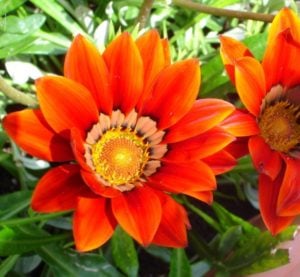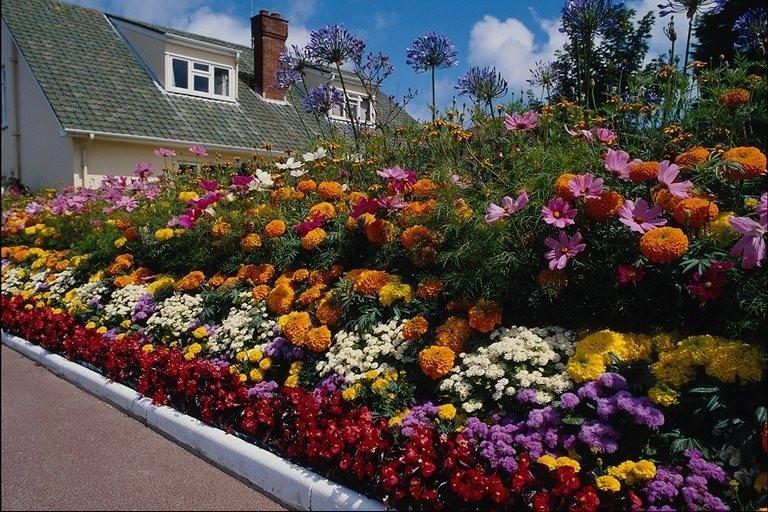
Options for arrangement of garden flower beds are very diverse,and they should probably talk more. Now we will discuss how to seem for curbs, ridges, mixborders, rock gardens and front gardens.
The border
The border is called narrow (from 30 to 50 cm wide), a long strip of plants, bordering the garden path, lawn or flower garden. For planting in curbs recommend using low culture, no more than 40 cm tall. However,as in any rule, there are exceptions.
As border planted as floral and ornamental deciduous plants: miniature Hosta, Coleus, silver Cineraria, tachys byzantina and others. This is a very advantageous option: unlike most flowering crops, ornamental foliage attractive throughout the season.

The border can be formed by annual, biennial and perennial plants. From annuals often used alyssum, ageratum, petunias and others. Of the biennials are best for planting in borders suitable, perhaps, viola. Offer a large selection of perennials.

Even vegetable crops can be used for curbs! Lettuce, parsley and even ordinary carrots can be an interesting and original element of the design of your site. A decorative cabbage will keep the unusual and bright until late autumn, until the first snow.
Since the main function of the border-framing any landscape element, it itself should have a clear outline. Often, especially if such a flower garden in the country is used for lawn decoration, its boundaries are indicated by using a decorative border tape; it helps to maintain the specified shape, not allowing plants to grow unnecessarily.
Flower bed
As the vegetable garden, the flower plants are often planted in straight rows or a symmetric group, that is, the ridges, in essence, is the flower garden regular type. In parks and large gardens can be found, decorated with floral patterns.

This flower garden is one-sided or two-sided, depending on its location. On a two-sided bed plants in the central row may be taller than the edges, but they should not close from the viewer the overall picture of the flower garden. In General, the traditional bed is planted with the same height plants, although now this rule is not always applied.
The width of the” flower bed ” varies widely: from 50 cm to 3 m; its length can be arbitrary. Very long flower bed is permissible to break apart small tracks
The width of the flower bed depends on the size of the planted plants and, of course, should be correlated with the proportions of the garden space. In a small area, narrow beds planted with low flowers are preferred.

The shape of the garden bed is rectangular, but it is not necessary: being located, for example, along a winding garden path, it can take the form of a ribbon, exactly following the outlines of the track.
For registration of beds most often use low long-term flowering and decorative-deciduous annual and biennial plants: silver cineraria, coleus, viola, alyssum, ageratum, marigolds, begonias and others.
Mixed flower borders
A more common type of garden flower garden is mixed borders. It is an elongated mixed flower front garden, made up of various perennial and annual plants so that its decorative effect remained throughout the season.

As well as a flower bed mixed borders can settle down along a fence, a track, a wall of the house or any other country structure. It can also be one-sided or two-sided, but there is no strict geometry, as well as uniformity: it is a flower garden of free form, which harmoniously combines a variety of plants planted alone or in small groups.
The recommended width of mixed borders is from 1.5 to 4 m. Tall plants in it are planted in the background (if the flower garden is one — sided-for example, near the wall of the house) or in the middle (if it is a wide flower garden with a two-sided view).

The basis of mixed borders, as a rule, are perennial plants, both flowering and ornamental-deciduous. They are supplemented with early spring bulbs and annuals with a long period of flowering.
Group plants in mixed borders, focusing on the timing of their flowering, color of flowers and leaves, size and requirements for conditions. The composition can be based on both contrasting and complementary combinations of colors and textures.
As in the case of a flower bed, the size must be correlated with the height of the plants and the area of the site. The General rule: the larger the plant, the wider you should do mixed borders. It is recommended that in a double-sided flower garden the height of the largest plant does not exceed half the width of the mixed borders. There is another rule: the greater the length of the flower bed, the wider it should be.
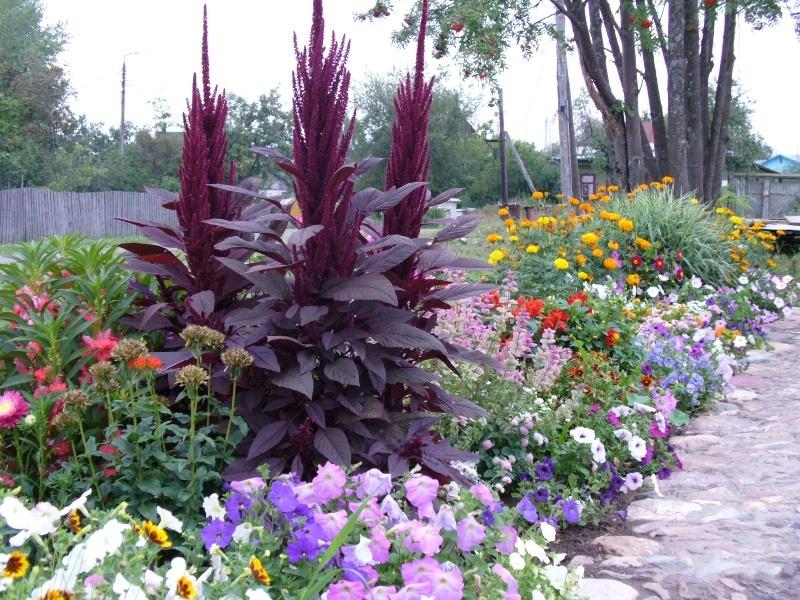
If the composition is one-sided, the plants in the background can be higher, but they are preferably planted in small groups, rather than “wall”. To give the flower garden volume, make it more natural, it is permissible to slightly shift certain groups of tall plants to the front edge (but make sure that they do not cover other flowers).
Rocky gardens
This type of flower garden is incredibly popular. And since there is a great variety of solutions for rocky gardens, to build a flower garden in the country, choosing the most suitable form for your site, everyone can. Landmarks here are the natural terrain, and the overall style of the garden, and tastes, preferences of the gardener.
For example, if the site is located on a slope, practical and stylish solution — the construction of retaining walls or arrangement of terraces. Sometimes these options are used in combination with each other.
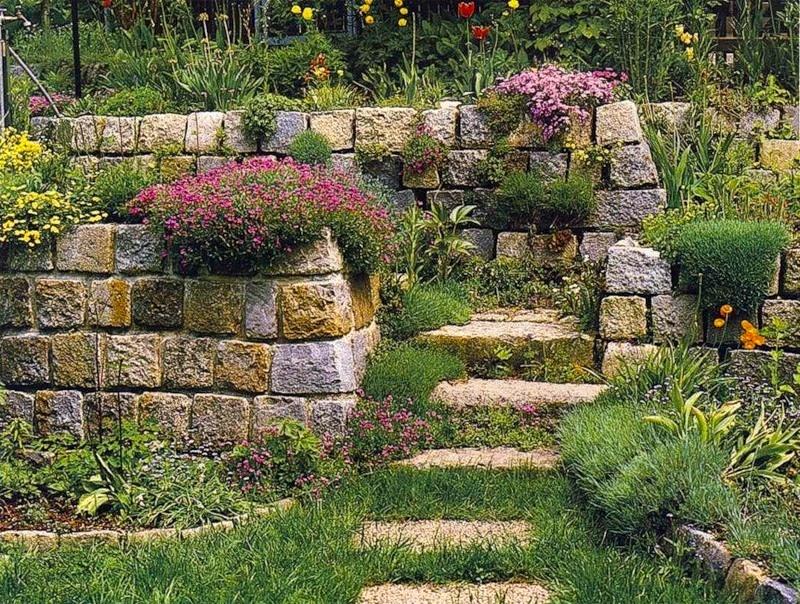
Stones in this case stack on a limy solution or carry out a dry laying, filling intervals with soil in which then unpretentious, drought-resistant plants are landed. For placement of larger copies in a laying do the special “pockets” filled with soil.
A spectacular addition to the rocky garden, made in the form of terraces — is a cascade stream or a miniature waterfall. In General, the combination of such flower beds with streams and ponds is a common and extremely decorative technique. Running water on the background of massive, static boulders brings dynamics to the composition, enlivens the landscape.
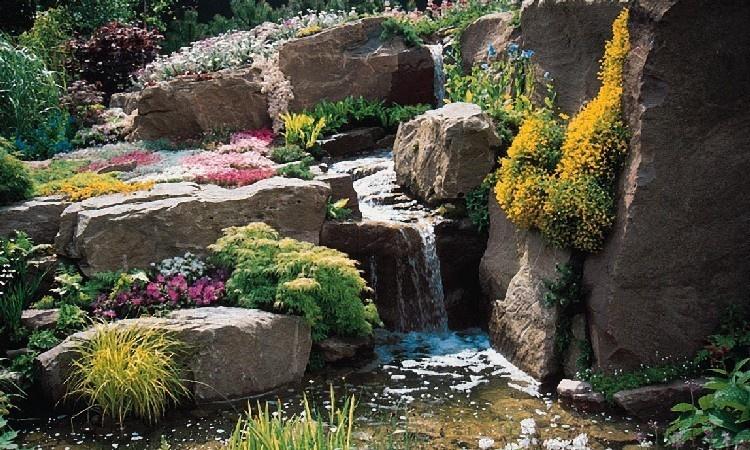
If the plot is absolutely flat, without the slightest hint of a slope, the rocky garden (rockery) can be built on a flat surface or create an artificial mound. Do not forget that at least half of the area of such a flower bed should be occupied by stones, and only the remaining — plants.
In order not to turn your rockery into a pile of cobblestones, you should carefully select stones for it: give preference to those breeds that occur in your area, and avoid diversity. Combine stones of different sizes and shapes — this will make the composition more natural.
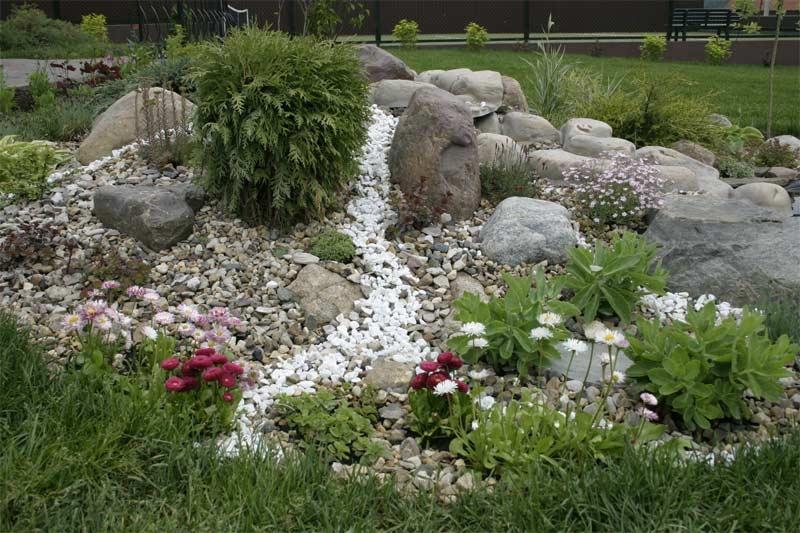
It is important to consider in advance the plan of the future flower garden, taking into account the growth and development of planted crops. It should be borne in mind that many ground cover quite aggressive, and their growth will have to be limited. Next to such plants planted larger and stronger species that can withstand the onslaught of “invaders”.
At first, while perennials have not yet gained strength, empty space can be filled with undersized annual plants. Suitable for planting in rockeries, for example, Common Purslane, Iberis, Cineraria silver.
In rocky gardens usually planted perennials that are adapted to live on dry, poor soils, ground cover plants: stunted Sedum, Rockfoils, Ajuga, Cerastium and many others. Look good here various melkolukovichnye (eg, Muscari, Crocus); traditionally placed among the stones and dwarf conifers.
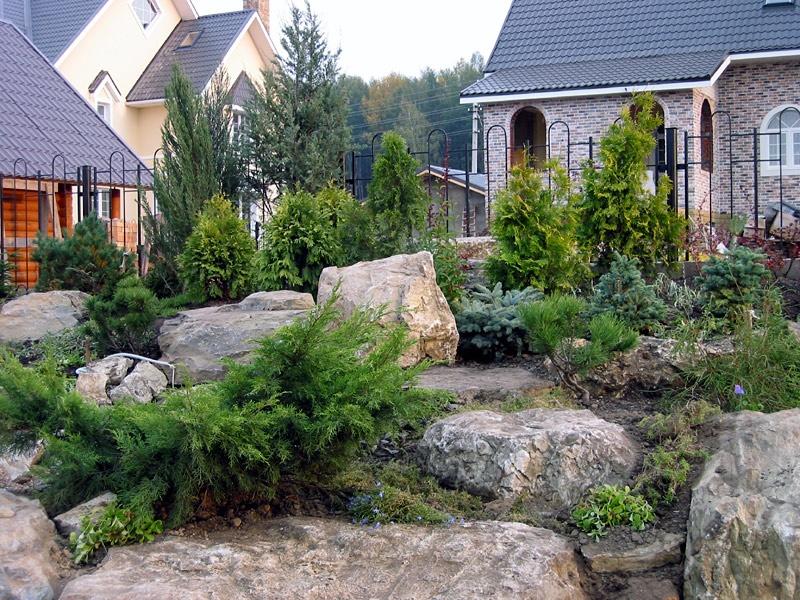
And even if the territory of your site is quite small, this is no reason to abandon the creation of rockery. See how interesting and harmonious can be a miniature composition made up of stones and plants:
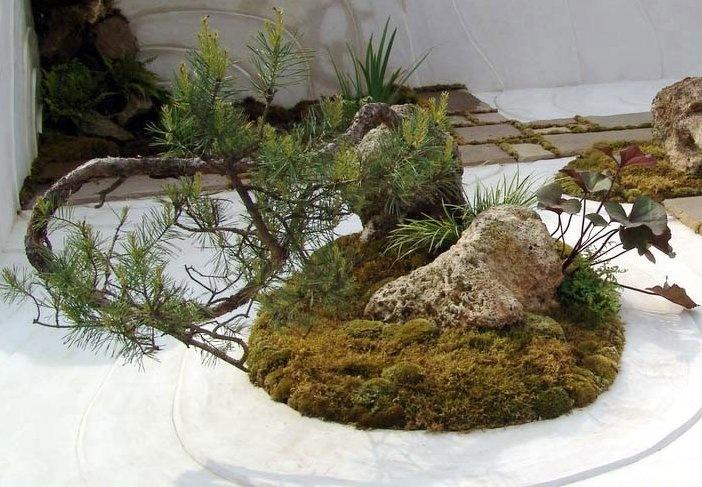
Front garden
Front garden called a small area that separates the house from the road. Often it is surrounded by a fence; often the front garden divides the path leading to the porch of the house; if the area allows, there may be a bench for rest.
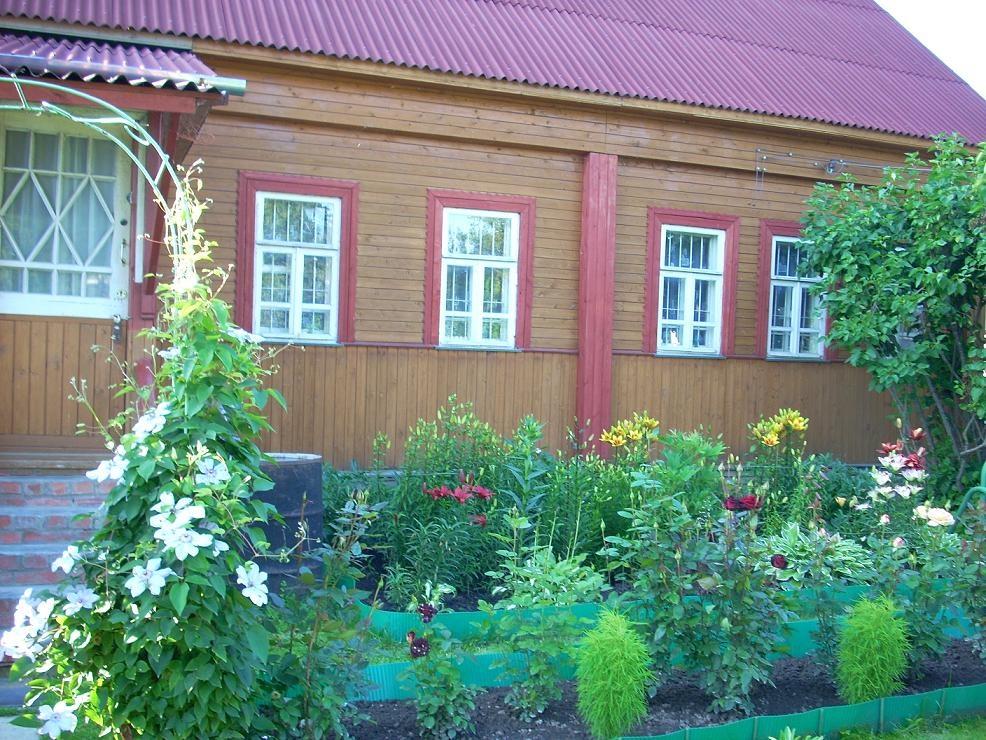
Features of the front garden design always depend on a number of basic parameters: the style of the house in front of which the flower garden is located, free space, conditions (sun or shade, soil composition, humidity, and so on). They are determined and colors, and the selection of plants and decorative elements.
For such a flower garden there is no single, universal recipe — too diverse possible combinations of conditions. You can choose from Phlox, Chamomile and lush Dahlia as well as the strict lines of the regular garden-neat geometric shapes, classic color combinations. There are many other options — to miniature container flower beds inclusive.
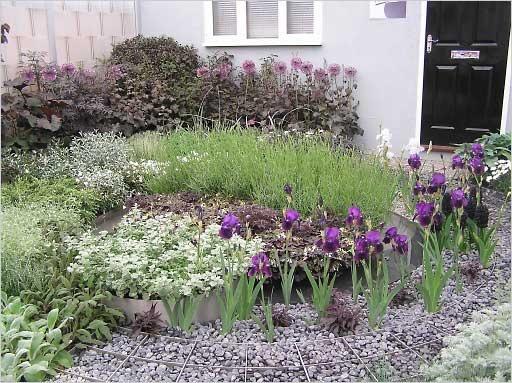
If the front garden is large, it is able to accommodate and mixed borders, and paths, and a small paved area for recreation. A small front garden, as a rule, all turns into a flower garden. Create here the composition that you will be pleased to see every day from the window, and enjoy!


